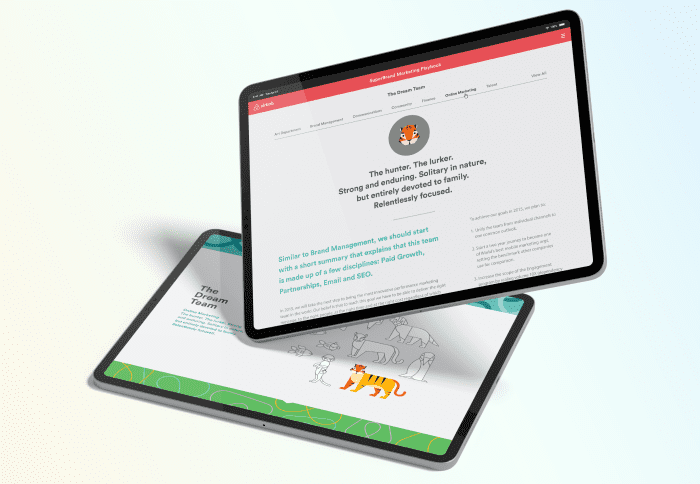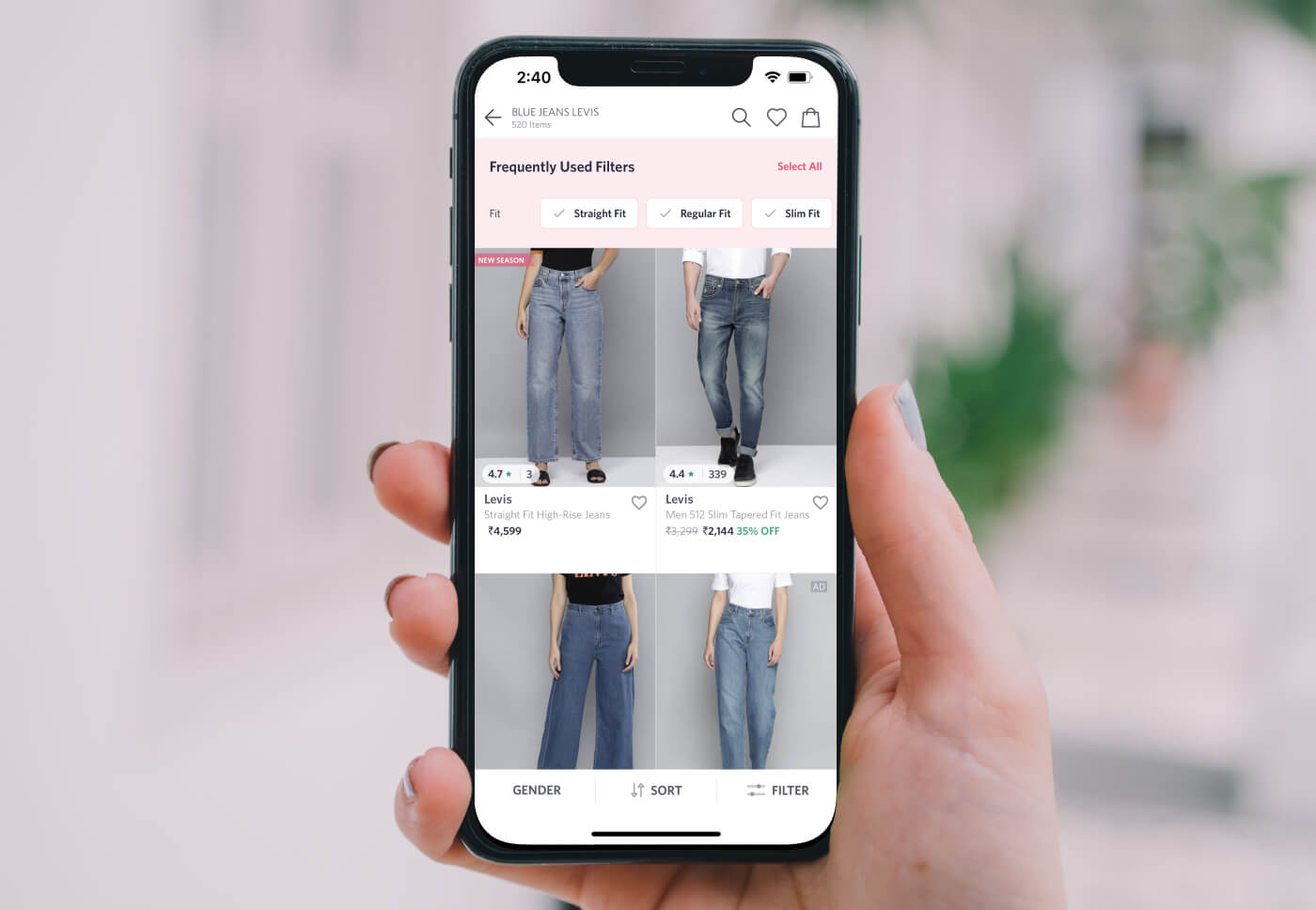
Inspiration can come from anywhere. Sometimes, it may manifest in the most vivid dreams. Other times, it may be that unique design around the corner. At Pepper Square, we’re always fishing for the next best thing in design, and we always keep our eyes open. Yes, even if it means staring at a puddle from an unflattering angle.
Since we live in the age of the internet, some things come easy to us. We don’t have to look far to find some great sources of inspiration, especially for design. All great design begins by placing the user at the heart of the problem and gradually eliminating pain points.
Case studies are one of the best ways to understand the planning, strategizing, designing, and development process. We’ll look at a few UX design examples and elaborate on our favorite ones, so you don’t have to.
But first.
What are UX Case Studies?
Think of it this way. It’s a summary (but a detailed one) of everything that has gone into the design process and how it delivered value. UX case studies offer vital insights about the project and highlight the designer’s skillset beyond designing and design thinking.
But UX case studies are different than your typical case studies. Following Aristotle’s storytelling elements may be the only thing you need to build a case study for the latter. By leveraging his storytelling style, you already have a generous dose of material, to begin with.
For instance, although the “plot, character, and theme” may not exactly be present in these specific avatars, you already have a fair idea of where to begin. The other elements follow.
The Importance of a UX Case Study
- A way to build trust
UX case studies showcase an agency’s past work and provide more than just an idea to prospective clients. It’s an in-depth presentation of a company’s portfolio. Since such information is readily available, it is also a form of building trust.
For it is human nature. Clients will want to work with companies that provide the right information and are transparent. Case studies are a way of doing so.
- A showcase of skills
Case studies highlight problems, solutions, and how one got to that solutions. With the latter, you enter the area of skills where agencies can show their might. This is another important parameter that clients use to understand whether a particular agency can solve their problems.
This is also one of the main reasons why UI/UX design agencies have a section for UX case studies in their website.
- Future references
Since case studies are essentially a record of all that has been done for a particular project, it easily becomes a repository for the future. Interns or other newly-joined members can easily go through these case studies to know more about the agency’s work.
This helps in a smoother transition of work and ensures that everyone at an agency is on board with the way they do things.
How to Build a UX Case Study?
Introducing an arc to the story for UX case studies will provide order and structure. Divide the case study into three parts with a designated introduction, middle, and conclusion.
Remember that no one has the time anymore. So, keep it crisp and hit readers with data that matters.
Step 1 – Introduction
The introduction should ideally encapsulate the main challenges and a problem statement. Then, follow it up with the solution you offered and your role in tackling the problem. It should not be more than five lines as it is essentially your elevator pitch.
At this stage, it’s also a good idea to share an outline of your approach and hint at the final deliverables.
Step 2 – Talk about the obstacles
Outline the problems and constraints you faced and explain your specific design thinking process. Briefly illustrate your research and progress leading to the next steps and, ultimately, the end goal.
Step 3 – The project’s summit
Keep the reader hooked on how you achieved your big goal. Talk about your story’s apex at this stage and knit a tight narrative to highlight the most significant bits.
Step 4 – Guiding factors
You must show how you combined extensive research and user insights to devise a plan and solution. Now is an excellent time to shed light on the ideas and decisions that led to your project’s final iterations.
Step 5 – Conclusion
The final stage of the case study should showcase the results and the resolution. Highlight how your solution helped reach or exceed a business-oriented goal or how you helped deliver value to the client with your solution.
Remember that not all UX case studies follow the five-pronged approach. You may also condense it to fewer steps if you wish, but the crux must remain the same.
What to Include in Your Case Study
UX Writing – it goes without saying that a UX case study should include all hallmarks of UX writing. It is the most basic step that users will look into as it helps them understand a point or two. UX writing also has the knack of grabbing one’s attention as it conveys the important points effortlessly.
Wireframes – a detailed case study will have a wireframe that showcases all relevant information and helps the user learn more about the whole structure. Based on the requirement, you can include a specific wireframe and depending upon the clarity needed, you can choose between the types of wireframes.
User Testing – always include results from user testing including feedback as it keeps the case study engaging and shows the different lengths you went to in order to make things work. As a parameter, user testing also helps clients understand how open you are towards feedback.
User Research – if the case study involves studying specific users or looking into a target group, you need to include results from the same. Considering the fact that user research is important, one does not need more than a single reason to have it in their case study.
Essential design aspects – a UX case study needs to include the right design aspects that in turn can drive home the more important points of the project. These aspects form a direction for the case study and take things towards a favorable outcome.
Common Mistakes that You Should Avoid
A UX case study without mistakes is what everyone wishes to see. It needs to be presentable and unique, which indirectly means that errors should be cut to a minimum or no errors at all. So to help you out, here are some common mistakes that you need to avoid while writing your UX case study.
- Forgetting the overall experience
Focusing only on the user interface and forgetting the overall objective of experience is a common mistake that should not reflect on your UX case study. Since design is not only about the UI, you need to pay attention to what matters and looking at a number of UX case study examples will tell you the same.
- Missing out on a structure
The modern approach to storytelling does include a structure even though some case studies don’t directly showcase the same. Every case study brings in a specific plan, approach and thus follows a structure that you need to continue following.
Missing out on these points can eliminate the purpose of your case study and even fail to highlight the key areas of focus.
- Failing to include the elements of storytelling
You don’t want to miss out on the elements of storytelling because you want your readers to stay focused and read what you are presenting. As mentioned before, following Aristotle’s storytelling elements is about capturing what is most important for a UX case study.
Hence include these elements and take your case study to a whole new level.
- Forgetting to highlight what’s important
Every UX case study has important points that describe how you came to a solution and the steps that you followed to do so. These points may or may not be complex but they need to enter the mind of a human who’s attention span lasts for 7 seconds.
Thus it is a challenge to ensure that the process of creating a case study is engaging. Highlighting the most significant points is one thing, making sure the reader wants to read it is another ball-game altogether. It is important to get creative with how you present your story.
- Not doing a thorough checkup
From punctuation errors to spelling mistakes and more, a case study could be filled with a ton of errors. So a thorough check up along with multiple readings is important before putting out your case study. Only through constant checkups can you reduce any errors that may exist.
Here’s how Pepper Square showcased its UX case studies for three leading brands and delivered exceptional solutions.
Pepper Square UX Case Study Examples
- National Fitness Campaign (NFC)
To transform the way the world views outdoor exercise and make exercising accessible and free for all, NFC tasked Pepper Square to bring free fitness to over 1,000 cities across the US by 2021. It’s a great example of UX design meets the physical world.
Pepper Square’s Solution?
- Redesign the existing mobile app
- Increase user engagement at local fitness courts
- Gamify the experience for users
- Introduce exciting fitness challenges
The Value Delivered?
Among other things, Pepper Square was able to make the refashioned app live in 3 weeks, and app downloads increased by 40% after the fresh release.
Read the entire case study here.
- Sun Mobility
Sun Mobility tasked Pepper Square to bring mass adoption of electric vehicles to reimagine the future of urban transportation.
Pepper Square’s Solution?
Pepper Square created multiple touchpoint experiences for Sun Mobility that would engage OEMs, fleet operators, and end customers to transition seamlessly to new-age transportation.
The Value Delivered?
One of the most crucial highlights was that the mobile app helped drivers in better decision-making by leveraging intelligent data. Promotional collaterals for Auto Expo 2018 included corporate presentations, brochures, kiosks, stickers, and cap designs that garnered buzz and traffic to the website.
Read the full case study here.
- Mamma Miya
To build a productivity app for mothers, two entrepreneurs shared their dream with Pepper Square to create an app to help multi-tasking mothers prioritize their ‘me-time.’
Pepper Square’s Solution?
Pepper Square created an ‘exclusive for mothers’ end-to-end productivity app. The app helps mothers convert their elusive free time into ‘me-time’ to accomplish things that are important to them. It’s the ultimate organizer/planner that every mother needs.
The Value Delivered?
With uniquely designed lists, notes, and a calendar, users of the app found the app beautiful and intuitive. Furthermore, Pepper Square enhanced the app experience with valuable feedback and learnings with iterative usability testing at the beta stage with real users. Here is a detailed look into our case study with Mamma Miya.
- Ketchum
We were tasked to help a client market their new food product, digital cheese blast and promote the same.
Pepper Square’s Solution?
Pepper Square created a fun new platform where users could cheese-blast themselves with the latest flavors by Old El Paso and also share these pictures on social media. The option to directly share these pictures was installed to promote virality.
The Value Delivered?
The campaign was a success as it had generated 8 million impressions with the social app and increased Twitter conversations by 1000%. With an exclusive story on the website, media highlighted Ketchum as a frontrunner in leveraging the digital space.
Audience showed support for the interactive concept by sharing images on social media, thus marking a successful project and a definite case study. Learn more about the case study, here.
Pepper Square’s approach to UX case studies is simple. Introduce the problem. Emphasize the solution. Put a spotlight on the value delivered with a well-crafted UX problem statement.
Here are a few other examples of the best UX case studies you can seek inspiration from.
- How HubSpot Redesigned Their Website – A Case Study
Here’s one of the best examples of a website redesign case study. Led by UX designer Austin Knight, the website redesign project was supported by three other team members, a marketing manager, a visual designer, and a developer. The supplement team included copywriting, product positioning, and technical development members.
With session recordings, qualitative research, and multivariate testing of minor changes in the first stage, Knight could devise a foolproof strategy to forge forward. By following the five steps of design thinking, HubSpot was able to revamp its website and make it a “data-informed UX success.”
- How to Live a Healthier Life with Bee Better – A Case Study
The makers are Bee Better understood one thing: everyone wants to be better and live healthier lives. But most complain that they are pressed for time. Another problem people face is that when they try to pick up a good new habit, they only find the will to keep at it for merely a week. It’s because they aren’t motivated enough. After all, habit development is a tedious process.
Busy Bee offered the ideal solution by making the process of habit-building fun and interactive. By engaging the user with friends and family, the app offers additional encouragement and tracks progress.
- Linkedin Recruiter Tool by Evelynma – A Case Study
With current recruiting tools making it hard for platforms like Linkedin to receive accurate information, UX designer Evelyn Ma Rasmussen looked to change things. Her goal was to also increase the likelihood of recruiters getting a positive response.
Rasmussen followed a detailed process of collecting information from candidates, crafting a user journey, and creating personas that in turn helped her visualize design. The outcome helped Linkedin engage with users and connect to the right candidates in order to receive a positive response.
- Giving customers exactly what they need – Cover Girl’s Case Study
Imagine a virtual makeup store where you can try out every shade of lipstick or see how a smokey eye looks on you. Now, you don’t have to imagine that anymore. In collaboration with AR company Holition, CoverGirl introduced a virtual makeup studio.
An instantly shoppable makeup experience, it set out to solve three main problems users complained about:
- Lack of time
- Distance from a physical location, and
- Removing makeup on the go
These were also the reasons why many preferred online shopping. But online shopping has its flaws too. There is no way to visualize how a particular shade would look on different skin types and textures. The virtual makeup studio took heed to user problems and found a revolutionary solution.
Conclusion
Existing and prospective clients always look for fresh ideas to elevate their brands and business. So, showcasing case studies to them is a great way to open more doors for further opportunities. It’s a window or a sneak peek at your team’s capabilities and what you can achieve with your set of expertise in UX project ideas.
Case studies are also a preview of your approach and your design thinking pattern. Besides this, UX case studies provide vital insights to recruiters. It helps weave a story of the task and how you navigated tricky waters. When done correctly, it helps maximize your appeal as a designer.







